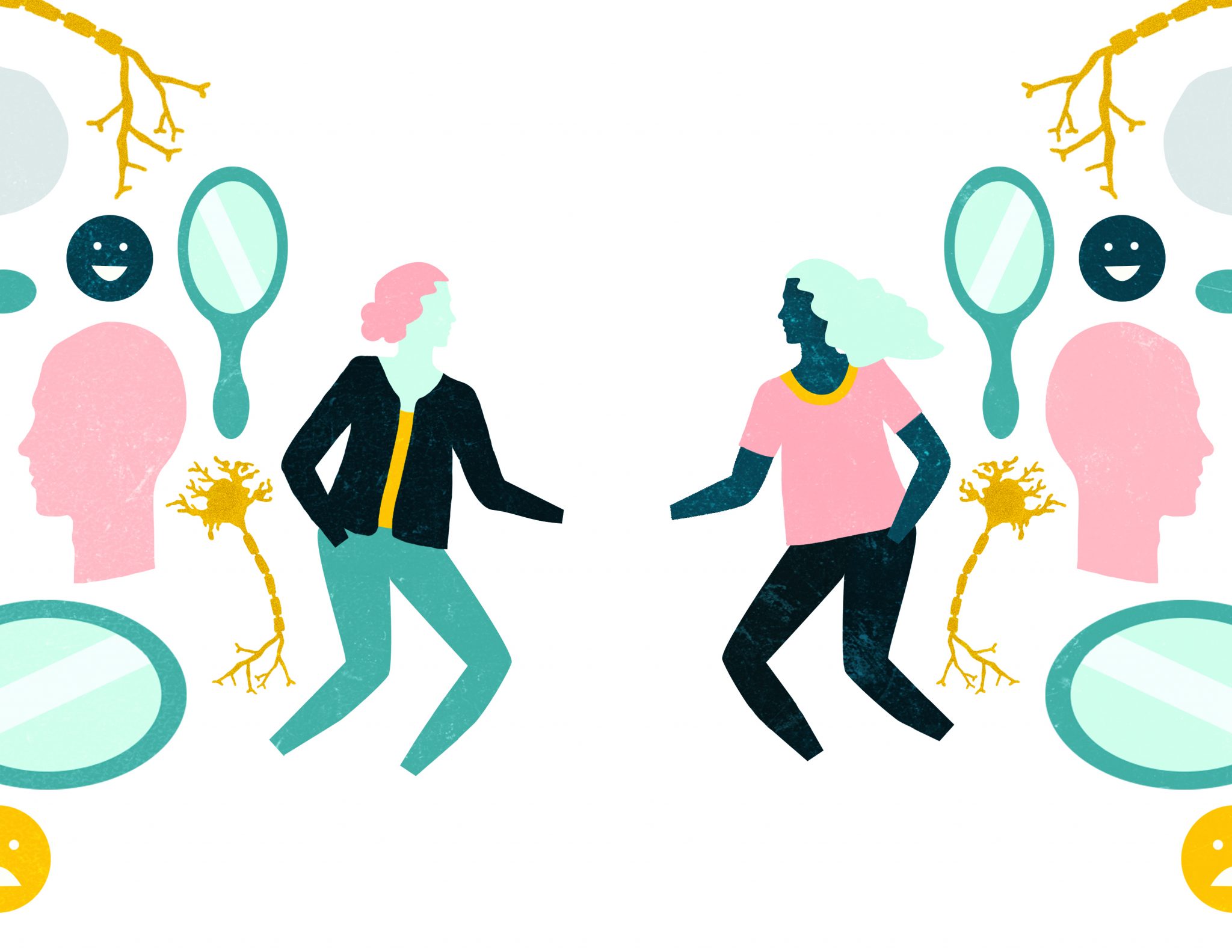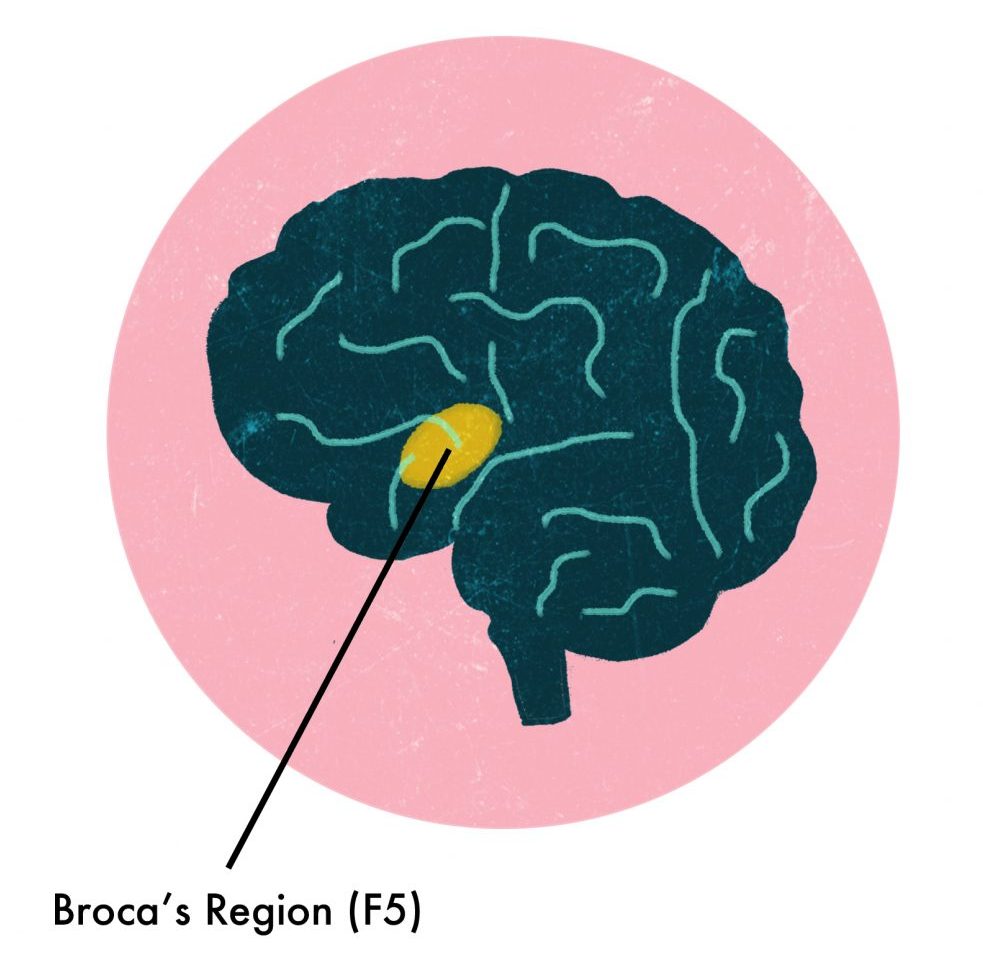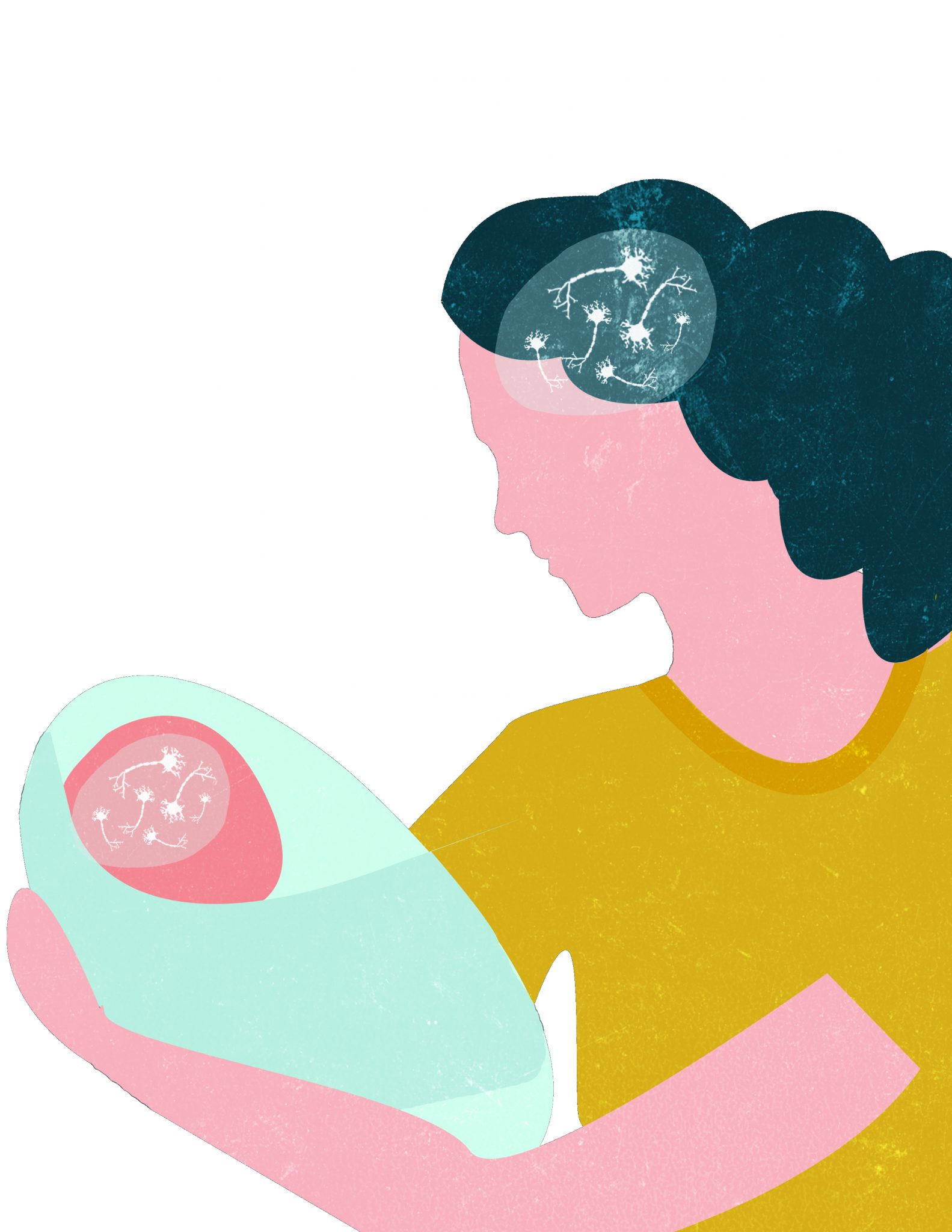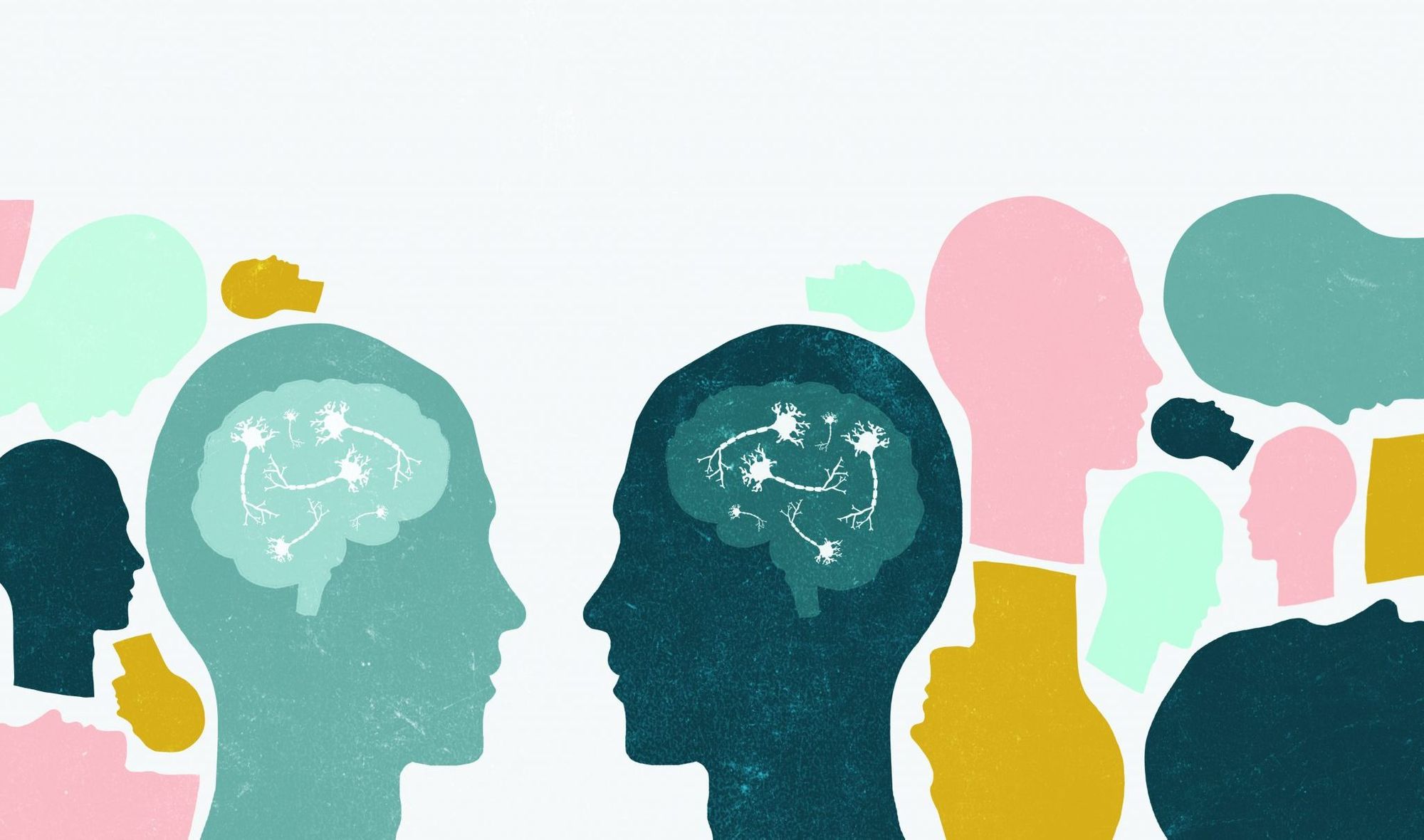On the lush savannah stand a herd of gazelles, grazing. Behind them, men prowl, registering one another’s actions in order to work together and formulate a plan to split their spoils. Although they are not cognizant of the term, empathy is what will allow them and their descendants to unify for survival’s sake. Even as the situations and settings have changed from hunting in the wilderness to conducting business in office spaces, scientists have theorized that human socialization and society still utilize the same principles of empathy to function [1][2][3].
While the hunter-gatherer lifestyle may seem simpler than today’s societies, the common perception that early Homo sapiens lacked empathy and the ability to cooperate could not be further from the truth. Early humans’ behavior and intellectual capacity have served as the backbone for the empathy that exists in modern humans. However, although empathy undoubtedly exists, neuroscientists such as Dr. Giacomo Rizzolatti of the University of Parma wondered what parts of the brain could be responsible for this phenomenon [3].

Homo Speculo
Dr. Rizzolatti was interested in better grasping the basis for empathy’s role in social interaction. Like other researchers, he knew that primates were a useful model for observing analogous anatomy and behaviors in humans, particularly for understanding the critical learning stage of a human’s first three to five months of life [2].
Despite the seemingly infinite number of hypotheses to test, the breakthrough came when Rizzolatti stuck out his tongue at a baby macaque monkey [2]. Instead of snuggling into his palms and ignoring the facial expression, the infant stuck out its own tongue. Intrigued, Rizzolatti and his team promptly commenced further reactionary testing. They found that the monkey, and even its entire brood, could observe and react to human behavior, going so far as to mimic parts of human speech and follow basic commands by the time it was five months old [3]. Rizzolatti postulated a potential neurological basis for this phenomenon, calling his discovery the “mirror neuron” system because it appeared as though he was staring back at a mirror image of himself [2][3].
Subsequently, while performing brain scans on the monkeys, Rizzolatti discovered that around 20% of the neurons in the F5 region of the premotor cortex are responsible for reactionary movements [4][5]. He interpreted the illumination of the F5 region in the brain scans as indicative of the first novel instance of mirror neuron activity. As the scientific community delved further, additional reactionary tests revealed that 20-25% of the F5 region was made up of mirror neurons. Furthermore, they learned that the nuance of the system allowed different parts of the brain to understand unique and specific human interactions [6][7][8].
Rizzolatti and his team hypothesized that humans might have a similar system responsible for early childhood learning [8]. Luciano Fadiga, professor of human physiology at the University of Ferrara, performed an experiment comparing the behavior of primates and humans. Though scientists had long known that humans and primates share structural similarities in their brains, they were at first skeptical of the idea that humans had mirror neurons as well [8]. However, Fadiga discovered that not only did humans possess these neurons at roughly the same proportion as other primates, but that their system responded differently. Monkeys’ mirror neuron systems only react with goal-centric actions, such as receiving rewards after a task, while humans respond to an action regardless of whether or not a tangible reward will be given [9]. To Fadiga, this meant that a facial expression as subtle as a sigh, chuckle, or wince would leave a monkey unperturbed, while it would alert a human to another’s state of mind [3][8].
Steps and Stumbles
However, there was also skepticism about the mirror neuron’s existence and role in empathy. Because many of the initial studies were not repeated and the mirror neuron’s origin was ambiguous, members of the neuroscientific community wondered how empathy arose during a human’s lifespan and how this system would develop in a child’s early life [8].
At the University of London, Dr. Victoria Southgate, interested in Rizzolatti’s findings, began investigating mirror neurons and tried to replicate similar results with human children [8]. She recruited and tracked children as young as three months of age and used brain scans to see if children’s mirror neuron systems were responding to social cues [10]. She did this continually until she could confirm that at 15 months old, the vast majority of children’s brain activity in the F5 region was equivalent to the activity in an adult’s brain [10]. At that age, the children could comprehend human faces and glean meaning from them, just as a human adult would [10].
In addition, Southgate noticed that the first rudimentary step in human mirror neuron maturation manifested as hand signaling, such as grasping motions and pointing fingers [9][10]. Southgate hypothesized that hand signaling affirmed a child could comprehend another person’s actions and emotions [9]. She found that the basic emotions and their corresponding facial expressions were not only understood, but were also expressed by children at that age in tandem with mirror neuron-spurred hand signals [10]. Based on Rizzolatti’s theory of mirror neurons and empathy, Southgate hypothesized that she had pinpointed a human infant example of the mirror neuron’s presence, thus corroborating Rizzolatti’s hypothesis that mirror neurons play a role in a person’s psychological and social development [10].
As replicate data and findings amassed, Marco Iacoboni, from Rizzolatti’s original team, and Southgate reviewed them. They believed they had found fascinating information about infants: infants seem to possess an uncanny knack for learning abstract goals within a few months of being born, which may be attributed to the existence and maturation of mirror neurons [10]. The two researchers hypothesized that human babies are not only capable of observational learning and reactions similar to monkeys, but that they can also begin predicting reactions and building self-identities through the people they interact with [9]. From this, scientists were able to better understand human empathy’s potential role in socialization, as well as the neural responses behind it [9][10][11].
The Butterfly Effect
Empathy is a key element of fostering an identity within a group, and what scientists continually define as the “social contract” is the resulting cultural outcome [12]. Though Rizzolatti acknowledged that mirror neurons on their own do not lead to a neurological and bodily response, the system could trigger parts of the brain dealing with emotion and spur a reaction [12].
In another study, Southgate observed that infants with greater capacity to cooperatively play had a larger quantity of mirror neurons relative to their peers with a lower capacity to play [10][11]. The amount of mirror neurons present was observed through brain scans that occurred periodically over five years, and this trend remained constant. Scientists asked how the mirror neurons might be able to govern such complex interaction and behavior, leading to studies on how human empathy is related to cooperation in a social context.
Years prior, Karl Sigmund, professor of mathematics at the University of Vienna, theorized that animal behavior could be explained with his principles of game theory, which is the study of how cooperation exists between various animals [15]. Initially, the scientific community postulated that there were three possible reasons for the mirror neuron’s evolution and continued existence: mirror neurons could detect aggression and prepare individuals to defend themselves (dominance), allow individuals to observe others’ presence to avoid interacting with them (bi-stability), or help individuals gauge others’ behavior in order to establish a mutually beneficial relationship (coexistence) [16]. Using these guidelines, Vittorio Gallese of the University of Parma cross-examined young children and adults watching videos displaying situations of dominance, bi-stability, and coexistence and recorded their brain activity to determine which scenario would induce the most firing of mirror neurons [15]. Gallese observed that although all three situations produced mirror neuron responses, the hostile response people exhibited while watching videos of aggression resulted in the lowest mirror neuron activity [15].
When mirror neurons fire, a flow of oxytocin, a hormone responsible for attachment and trust, triggers the empathy response characteristic of coexistence [15][16]. Gallese discovered that because of this mechanism, humans lose their internal anxiety and aggression toward others and will respond in favor of coexistence instead. This principle rings true for raising children and for role play, which require specific skills learned through mirror neurons and empathy for others in different social, hierarchical roles [15][16][17].
Analyzing these studies gave scientists further insight into how people learn to cooperate with one another. Citing Sigmund’s principles of game theory, Southgate and Gallese postulated that two individuals will agree to collaborate because of the mirror neuron’s capacity to counter dominant behavior through the release of oxytocin [14][15]. Other researchers concurred with Gallese’s and Southgate’s hypothesis, finding that upon mirror neuron firing, the parts of the brain linked with the mirror neuron system help generate an empathic response, such as consoling other humans after hardship [15].
Although the average person can walk, speak, and eat without interacting with others, humans still have an affinity for performing these activities together. Even mundane tasks require socialization, including learning socially inclined behavior, such as manners [8]. Social behavior is a part of a call-response mechanism, which Rizzolatti defines as a human’s reaction to a stimulus [8][9]. In the call-response mechanism, an external stimulus, such as an audible sound or change in lighting, is noted by an individual, causing the mirror neurons to transfer a signal to the limbic system, which processes the physical and emotional response [8][9]. Humans from different backgrounds and cultures all possess the call-response mechanism [3][8]. To scientists like Rizzolatti, this model showed that humans are innately empathic creatures who understand subtle social clues through mirror neurons, an idea that transcends the notion that socialization is a learned or culturally unique behavior [8][9].
Given the behavioral connection with mirror neurons, scientists had support for a hypothesis that explains the crowning result of mirror neurons: the capacity for speech [15][17].
A Gift of Gab
The evolution of language has been considered an essential empathic function because vocalization, or the way humans create sounds, is an important function of human social behavior [17]. Though neuroscientists had identified Broca’s region as the area responsible for speech, they were puzzled as to how it interacted with other parts of the brain since no clear mechanism had been observed [17]. However, since mirror neurons play a pivotal role in motor control, Gallese hypothesized that their activities correlated with the mouth forming speech and the brain comprehending speech [17]. When Gallese studied babies, he found that mirror neurons might aid the maturation of Broca’s region [17]. To corroborate his initial hypothesis, Gallese ran brain scans while adults spoke, revealing that the firing of the mirror neurons was consistent with previous correlational observations. However, Gallese’s experiment inspired debate as he neglected to test the causational nature of his claim [16].

Despite the controversy, brain scans continued to support the role of the mirror neuron system and empathy in speech [17][18]. After performing experiments akin to Gallese’s speech scans, Gabriella Cerri of the University of Milan used external electrical impulses to shock parts of the human mirror neuron system to see if they would cause the vocal cords to elicit an otherwise unprovoked response. While the team could not trigger a phonetic response, their screenings did reveal that the mirror neuron system illuminated when the mouth and vocal cords moved. Scientists believe that this finding suggests that when mirror neurons are removed, the creation of words and the grammatical amalgamation of speech are cripple [18]. Cerri’s result indicates that the mirror neuron system assumes a supplemental, yet vital, role in speech [17][18].
Though speech and communication are essential to sustaining society and social bonds, Gallese’s research suggests that without mirror neurons, these complex interactions would not exist [15][17][18]. Without spoken language, written language would have never become a reality [17][18]. As Gallese reasoned, this in turn laid the foundation for the development of empathy in humans [15][16][17]. To the scientific community, this discovery meant language was a response resulting from the empathic nature of humans [17][18].
The System That Followed Me Home
While the mirror neuron system was being further explored in humans, other neuroscientists continued to analyze animal models to better understand and validate its evolutionary origins. Dr. Francesco Ferrari of the University of Parma performed additional experiments with macaque monkeys [19]. When his research team began teaching the monkeys to use tools, he found that the mirror neurons in the F5 region would fire electrical signals and release oxytocin, which would increase the monkeys’ enjoyment of the activity and make them more sociable [19][20]. Fadiga found that human subjects had a similar response and postulated that humans must have developed the system due to an evolutionary advantage. Many agreed, theorizing that the system may have been favored due to better group survivability, leading to better cooperation among individuals [20].
Richard Cook, a psychologist at the University of London, similarly speculated that the mirror neuron and empathy must have had an evolutionary reason for existing and thus commenced a systematic review of the mirror neuron’s growth and propagation [19][20]. He suggested that the mirror neuron system developed because conditioning like learning required it [19]. Corroborating what Southgate and Rizzolatti had noted, infants learn by using their mirror neurons to facilitate associative learning [19]. Due to this hypothetical feedback loop, the call-response that Rizzolatti observed would make sense: aside from innate love for their offspring, the mirror neuron could provide a biological incentive for parents to love their children. However, Cook posited that this synchronous behavior must be a display of empathy, thereby allowing the infant to trigger the mirror neurons of the observer to signal hormones linked with affection [19][20].
Cook also presupposed that the other behaviors tied with the mirror neuron share a similar explanation. Given Fadiga and Rizzolatti’s findings, he found that the audiovisual portions of the brain, though independently linked with other parts of the mirror neuron system, still possessed functional mirror neurons [19]. He posited that the first empathic responses arose from mirroring movements and verbal communication, subsequently fine-tuned to improve group cooperation [20]. He believed that the mirror neuron developed complexity and pervasiveness as it showed to be adaptive for early to modern humans [20].
Cook’s theory was met with doubt, but Oxford professor Cecilia Heyes attempted to make more sense of this evolutionary hypothesis through neurological and chemical reasoning [19][20]. Although Cook asserted that mirror neurons were continually activated throughout an individual’s lifetime, he failed to realize that there were still discrepancies over whether or not mirror neurons had been shown to trigger the call-response mechanism. However, Heyes was able to reconcile this controversy by acknowledging that mirror neurons may not be a phenomenon restricted to only humans and other primates; because mirror neurons may be the cause of associative learning, other animals may have a similar mechanism in place [20]. Although the theory is still speculative, she assumed that this assertion best fit the data suggesting it does exist within humans [20]. She advised the community at large to continue searching for more tangible clues to the mirror neuron’s existence and origins, but her research suggested that this was why it allowed human social behavior and empathy to flourish [20].
Be It Ever So Humble
The mirror neuron system is magnificent in that it has provided many potential answers about empathy, yet the system’s speculative nature could either lead to a plethora of false leads or groundbreaking discoveries. Some members of the neuroscientific community remain skeptical of how much of a role mirror neurons play in human behavior [20]. Despite the schism, researchers such as Rizzolatti continue to explore the biological mechanism of the system and the effects that removing the system could have. As more and more empirical evidence indicates mirror neurons play a vital role in empathy and other actions, scientists are more certain of its importance in the human population [3]. Studying the system provides an unprecedented look into human empathy, helping scientists formulate novel ideas of how empathy forged civilization and how human interaction will continue to evolve. But more importantly, studying the system provides scientists with technical acumen and knowledge on how to better study other neuron systems, making it a specialized model for understanding the unknown [18][19][20].

References
- Coen, E. (2012). Cells to Civilization (1st ed.). Princeton, NJ: Princeton University Press.
- Iacoboni, M. (2009). Mirroring People: The Science of Empathy and How We Connect with Others (1st ed.). New York, NY: Picador.
- Heyes, C. (2010). Where do mirror neurons come from? Neuroscience & Biobehavioral Reviews,34(4), 575-583. doi:10.1016/j.neubiorev.2009.11.007
- Nicholson, N. (1998). How Hardwired Is Human Behavior? Harvard Business Review, 76(4), 134-147.
- Jerison, H. J. (1973). Introduction to Progressive Evolution of the Brain. Evolution of the Brain and Intelligence, 283-285. doi:10.1016/b978-0-12-385250-2.50022-5
- Bruni, S., Gerbella, M., Bonini, L., Borra, E., Coudé, G., Ferrari, P. F., . . . Rozzi, S. (2017). Cortical and subcortical connections of parietal and premotor nodes of the monkey hand mirror neuron network. Brain Structure and Function. doi:10.1007/s00429-017-1582-0
- Kilner, J. M., & Blakemore, S. (2007). How does the mirror neuron system change during development? Developmental Science, 10 (5), 524-526. doi:10.1111/j.1467-7687.2007.00632.x
- Mukamel, R., Esktrom, A. D., Kaplan, J., Iacoboni, M., & Fried, I. (2011). Single neuron responses in humans during execution and observation of actions. Current Biology, 20 (8), 750-756. doi: 10.1016/j.cub.2010.02.045
- Jerison, H. J. (1973). Introduction to Progressive Evolution of the Brain. Evolution of the Brain and Intelligence, 283-285. doi:10.1016/b978-0-12-385250-2.50022-5
- Lamm, C., Decety, J., & Singer, T. (2011). Meta-analytic evidence for common and distinct neural networks associated with directly experienced pain and empathy for pain. NeuroImage, 54 (3), 2492-2502. doi:10.1016/j.neuroimage.2010.10.014
- Southgate, V. (2013). Do infants provide evidence that the mirror system is involved in action understanding? Consciousness and Cognition, 22 (3), 1114-1121. doi:10.1016/j.concog.2013.04.008
- Morrison, I. (2002). Mirror neurons and cultural transmission. Mirror Neurons and the Evolution of Brain and Language Advances in Consciousness Research, 333-340. doi:10.1075/aicr.42.25mor
- Marschark, M., Spencer, L. J., Durkin, A., Borgna, G., Convertino, C., Machmer, E., . . . Trani, A. (2015). Understanding Language, Hearing Status, and Visual-Spatial Skills. Journal of Deaf Studies and Deaf Education, 20 (4), 310-330. doi:10.1093/deafed/env025
- Rogalsky, C., Love, T., Driscoll, D., Anderson, S. W., & Hickok, G. (2011). Are mirror neurons the basis of speech perception? Evidence from five cases with damage to the purported human mirror system. Neurocase, 17 (2), 178-187. doi:10.1080/13554794.2010.509318
- Gallese, V. (2003). The ‘Shared Manifold’ Hypothesis From Mirror Neurons To Empathy. Journal of Conscienceness Studies, 36 (4), 171-180. doi:10.1159/000072786
- Sigmund, K. (2017). Games of life: explorations in ecology, evolution and behavior (3rd ed.). Mineola, NY: Dover Publications, Inc.
- Keysers, C., Kohler, E., Umilt, M. A., Nanetti, L., Fogassi, L., & Gallese, V. (2003). Audiovisual mirror neurons and action recognition. Experimental Brain Research, 153(4), 628-636. doi:10.1007/s00221-003-1603-5
- Cerri, G., Cabinio, M., Blasi, V., Borroni, P., Iadanza, A., Fava, E., . . . Bello, L. (2014). The mirror neuron system and the strange case of Brocas area. Human Brain Mapping, 36 (3), 1010-1027. doi:10.1002/hbm.22682
- Cook, R. (2012). The ontogenetic origins of mirror neurons: evidence from ‘tool-use’ and ‘audiovisual’ mirror neurons. Biology Letters, 8 (5), 856-859. doi:10.1098/rsbl.2012.0192
- Heyes, C. (2010). Where do mirror neurons come from? Neuroscience & Biobehavioral Reviews, 34 (4), 575-583. doi:10.1016/j.neubiorev.2009.11.007
